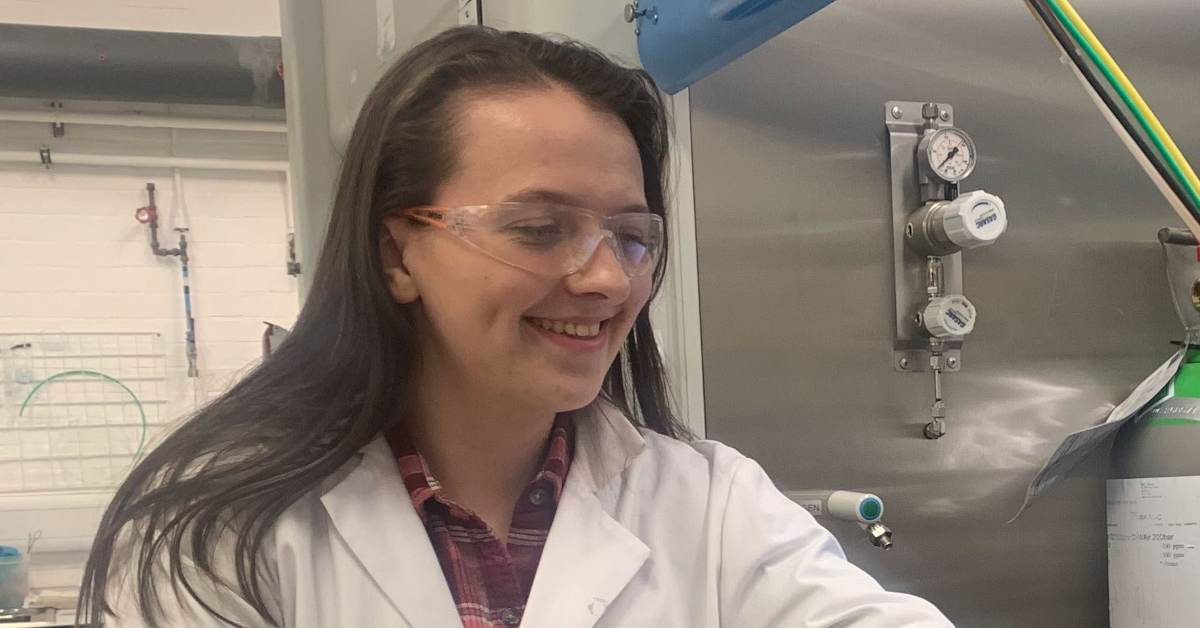My School of Engineering Internship

By Freya, fourth year, MEng (Hons) Chemical Engineering
Every year, the School of Engineering advertises many different internship opportunities. These opportunities span all engineering disciplines, with some even open to people from multiple degree programmes.
Last summer, I was lucky enough to secure one of these internships and here I will talk briefly about my experience.
Introduction
First, just a quick introduction on what my project was actually on. My internship was based in the School’s Catalysis Laboratory working with Dr Francisco Garcia Garcia and his PhD students, focusing on technologies which reduce environmentally damaging emissions from vehicle engines.
I originally started working on fabricating hollow fibre modules which are used in ammonia selective reduction – a non-traditional method of reducing harmful exhaust gases from diesel engines. Near the end of my placement, I also had the opportunity to work on another project, fabricating and testing hollow fibre modules for carbon capture technologies.
Carbon capture is a key technology for chemical engineers working to tackle climate change, as it focuses on capturing carbon dioxide at source (as it is produced by engines) before it can get into the atmosphere.
The idea of both these projects was eventually to test the resulting units in a motorbike kept in the lab.
In the laboratory
In the lab, I would spend most of my time making up resorcinol-formalin solutions and impregnating this into hollow fibres. The hollow fibres then had to be left in an oven overnight. The next morning, I would take the hollow fibres from the oven and load them into a reactor, where I would heat-treat the hollow fibres under flow of nitrogen.
Once I had managed to make enough, they were able to be tested! Some were impregnated with a chemical catalyst, and tested to see if they reduced the harmful emissions of diesel engines, and the rest were tested for carbon capture.
Seeing, and sometimes taking part in, these tests was particularly satisfying as I had the chance to see the thing I had been making for weeks actually working (most of the time anyways)!
I was also able to use a powerful tool called a Scanning Electron Microscope to look at the samples I had fabricated under 3000x magnification. This was one of my favourite parts of the whole project.
Presentation day
In the middle of the School of Engineering internships, there is a presentation day where everyone gets the chance to show off their project in only two minutes. It was so interesting to see what everyone had been getting up to. Some of my favourite presentations came from the fire laboratory – they always have such nice videos!
You would also think that the presentations only being two minutes long would make them easier, however, this presented a unique challenge. It’s trickier than you think to sum up a month of work in only a couple of minutes.
Things I learnt
First and foremost, the most important thing I gained from this experience was improving my lab skills. Learning to do experiments in the teaching labs is very different from being involved in a research lab. It was also beneficial for me to be able to speak to PhD and MSc students and learn about their experiences.
I think the most important thing I learnt however, is that when you do something new for the first time, no one expects you to be perfect, and it’s always ok to ask questions!
Find out more
The School of Engineering offer a minimum of 20 summer internships each year for School of Engineering undergraduate students from second to penultimate years. These open for application in February each year.
Further information for existing students can be found on the ETO Hub.
The School summer internship programme is only one of a number run through the University which students can apply to. There is also:




Comments are closed
Comments to this thread have been closed by the post author or by an administrator.